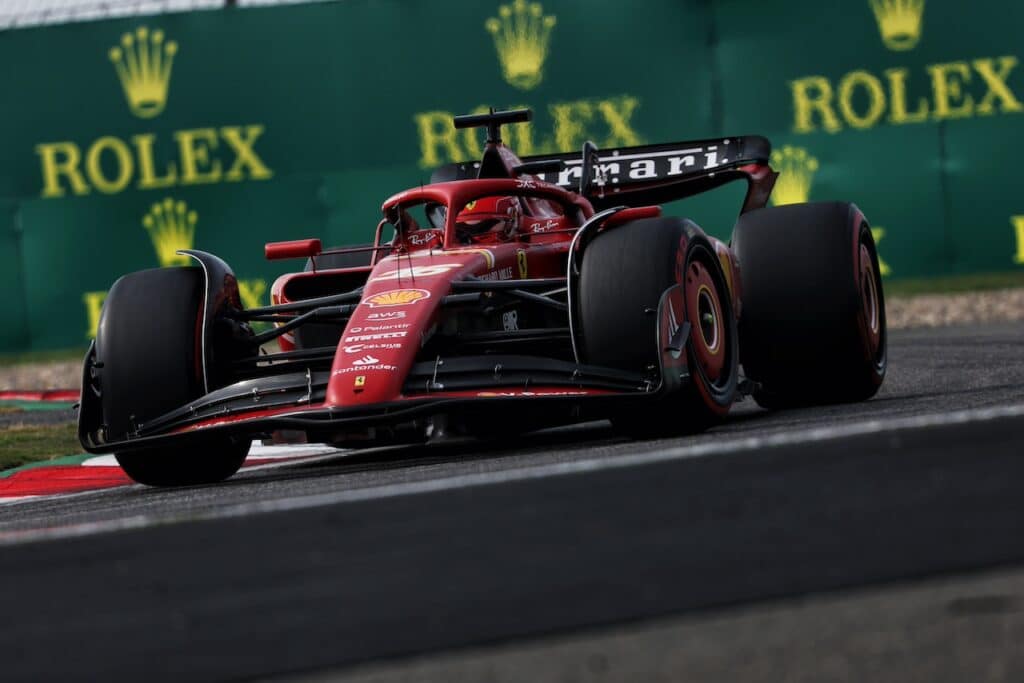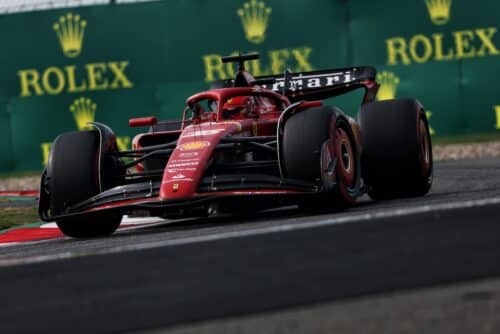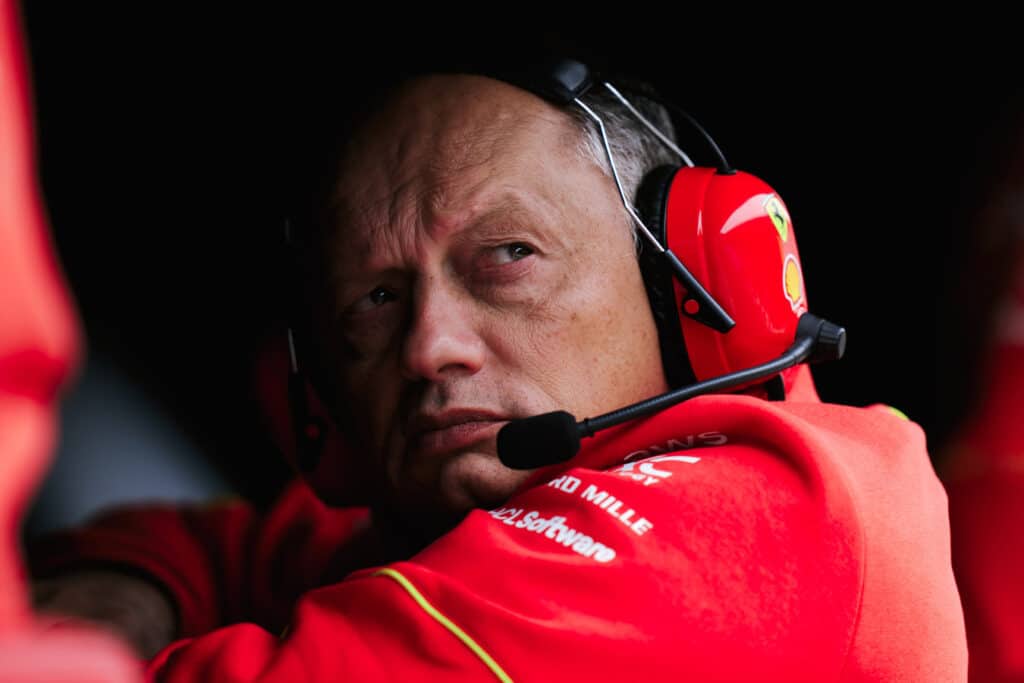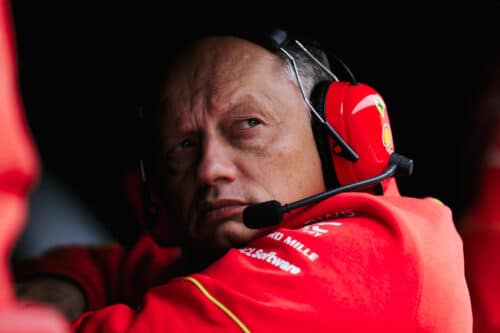Chinese GP: Friday technical analysis
Here are all the news from the top teams in Shanghai
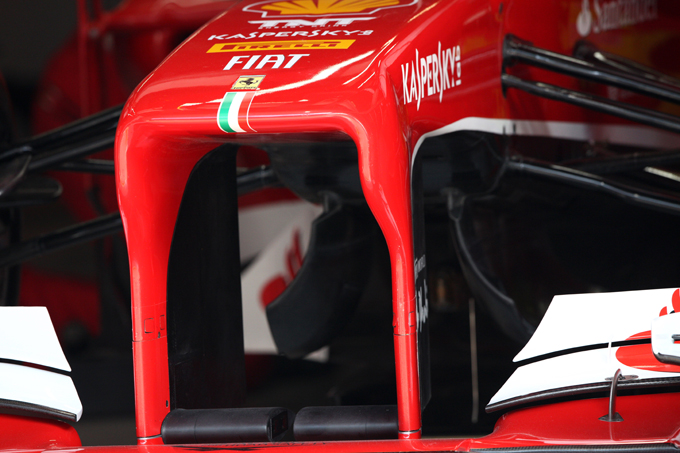
After the long break, the Chinese GP was eagerly awaited as many technical innovations were expected on the single-seaters. These big news have not been seen for now even if the top teams have brought something new and interesting.
Among the most active teams there is certainly Ferrari which during free practice in Shanghai carried out comparative tests in the front area as it introduced a new front wing modified especially in the side plates. Also of new design are the three-element turning vanes mounted under the bodywork which have the aim of improving the flow of fluids in a particularly delicate area of the single-seater.
In the old solution there were two blowholes on the side bulkhead of the wing which allowed part of the flow to be brought from the external to the internal area of the wing. In the new version that you can see from the photos below, two blowers have been introduced which bring air to the lower area of the wing.
These new openings have the function of guaranteeing the right flow of air under the wing even at high speeds when the wing tends to lower.
From the comparative tests carried out by both drivers, it seems to have given the expected results and with this aerodynamic solution the F138 was very precise when entering curves both in the slow and fast sections.
Turning vanes China
Micro-aerodynamic work in the air intake area. As you can see from the photo below, the fins in both the upper and lower parts have been modified to improve the flow pattern in this area of the single-seater.
Red Bull was the most anticipated team as, last week, there were rumors of possible interventions in the exhaust area which however did not take place.
For now, turning vanes modified in the shape of the fins have been observed.
Turning Vanes Red Bull – Chinese GP
Turning Vanes Red Bull – GP Melbourne
During the second free practice session, Vettel used a different rear wing than teammate Webber and it was a less loaded wing, with fewer blowholes on the side bulkhead. Other material, coming directly from Milton Keynes, arrived while the tests were underway, therefore, other changes are expected for tomorrow on the RB9 which for now has not proven to be very competitive.
Among the most active teams in trying to improve the performance of their car, there is certainly Mercedes which appeared on the Chinese circuit with new aerodynamic parts in both the front and rear areas.
At the front end, a new front wing was tested with small changes to both the main flaps and the cantilever ones. This new wing was compared with the previous one and only after a detailed analysis, the engineers will decide which solution to use during qualifying and the race.
To recover part of the aerodynamic load missing from the rear axle, Mercedes worked especially in the diffuser area which has been modified, as you can see from the photo below, in several places compared to the version used in the first two races.
The central channel in which the starting hole is used as a sort of double speaker has been modified in shape and size. In this area, due to the limitations imposed by the FIA technical regulations, this area is exploited to increase, even if slightly, the size of the diffuser.
The side channel, in the version seen during the Chinese GP free practice, is much more rounded and will have been designed to maximize the effect of the hot gases coming out of the exhausts to generate aerodynamic load.
In home Lotus, as expected, the new ramp exhausts were also installed on Grosjean's car which had only been used by Raikkonen on the Sepang circuit.
As you can see from the image below the ramp now descends much faster than before and is also slightly shorter. In fact, just look at the vertical fin on the bottom, used to improve the directing of the hot gases towards the external part of the diffuser, to understand that the exhausts have been shortened and therefore moved away from the rear wheel. The material used in the exhaust area has also been changed. Now, as you can see from the photos it is much shinier and will most likely have been made with a material that resists high temperatures better (1000 degrees).
New unloading ramp
Solution used in Melbourne
With the introduction of the new exhaust ramps, the tunnel under the exhausts has also been modified, which is used to bring part of the air flow coming from the sides towards the central part of the diffuser. With this exhaust configuration the tunnel has become taller and shorter. The tunnel is a fundamental element as it is used to guarantee a good aerodynamic load even when the pilot is releasing the accelerator and therefore the hot gases coming out of the terminals are not sufficient to guarantee a good load.
exhaust comparison
The aerodynamic work that Lotus engineers are doing to develop the already excellent E21 is interesting. In these first races of the season they are focusing a lot on the flow diverters in the area of the air intakes on the sides. On the Chinese track, they brought the third evolution of the deflectors which were combined with two small fins on the sides to improve the flow pattern towards the rear in order to maximize the Coanda effect of the exhausts.
Deflectors used in China
High deflectors used Melbourne – Low deflectors used in Sepang
Changes also to the rear aerodynamics, as, as you can see from the photographic comparison, a diffuser has been used which features innovations in some channels in order to maximize the aerodynamic load produced thanks to the use of the Coanda effect exhausts.
Furthermore, a new version of the front wing has been brought but it is not yet known whether it will be used during qualifying and the race as the engineers, after having collected the data, will analyze it and choose the best front aerodynamic configuration.
Cristiano Sponton
if you want to always be updated on our news
Follow us here



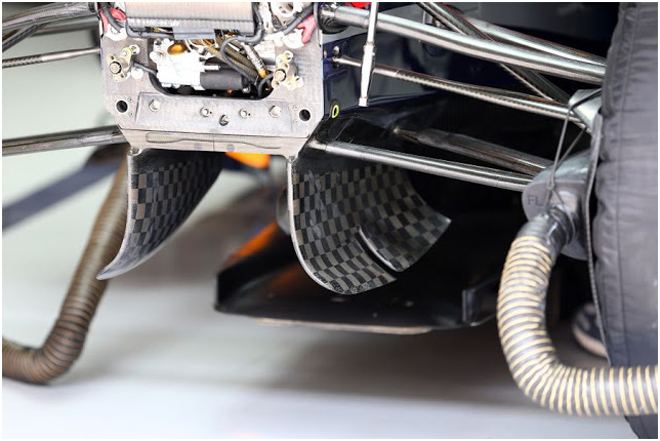

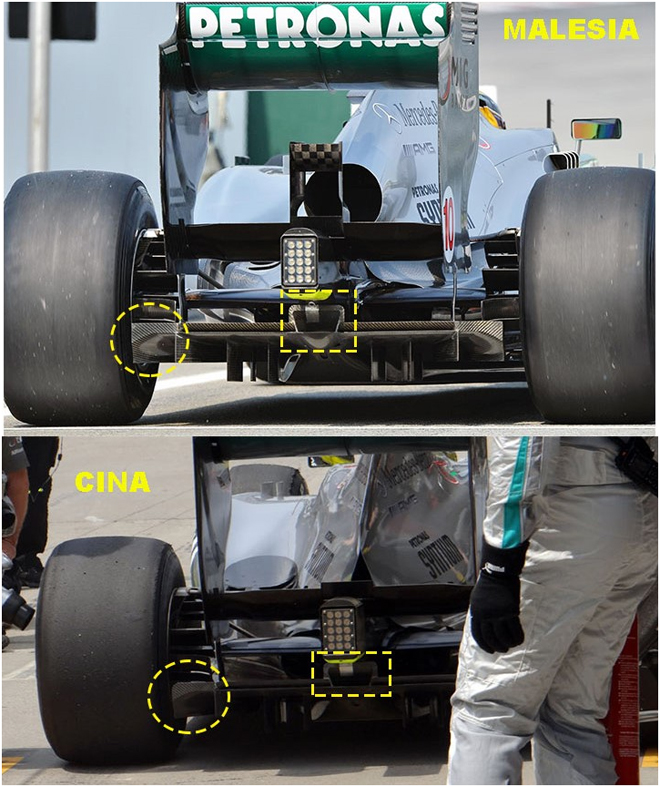
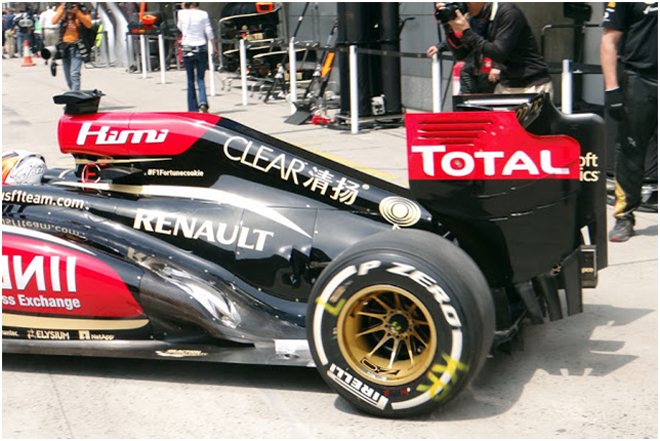

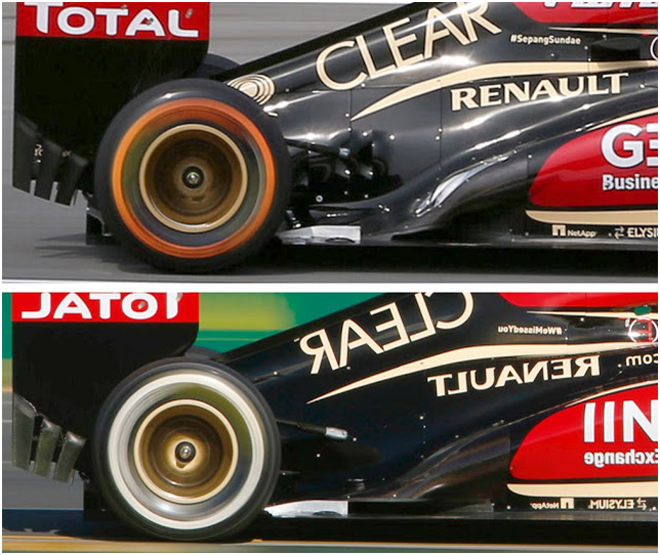



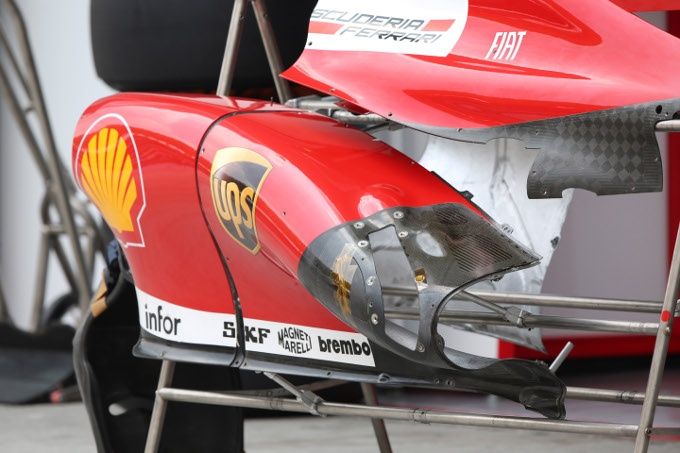
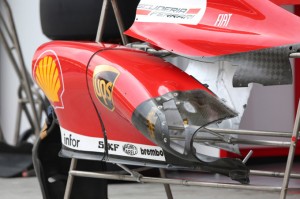
![Formula 1 | Focus: the special liveries in the history of Ferrari [PHOTO]](https://f1grandprix.motorionline.com/wp-content/uploads/2024/04/focus-ferrari7-1-1024x680.jpg)
![Formula 1 | Focus: the special liveries in the history of Ferrari [PHOTO]](https://f1grandprix.motorionline.com/wp-content/uploads/2024/04/focus-ferrari7-1-500x332.jpg)
